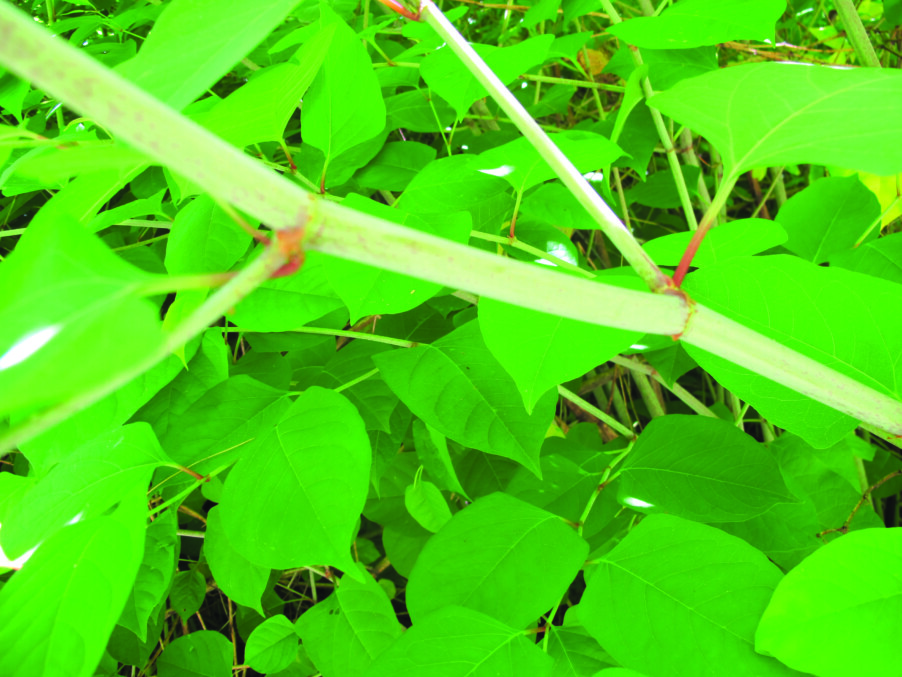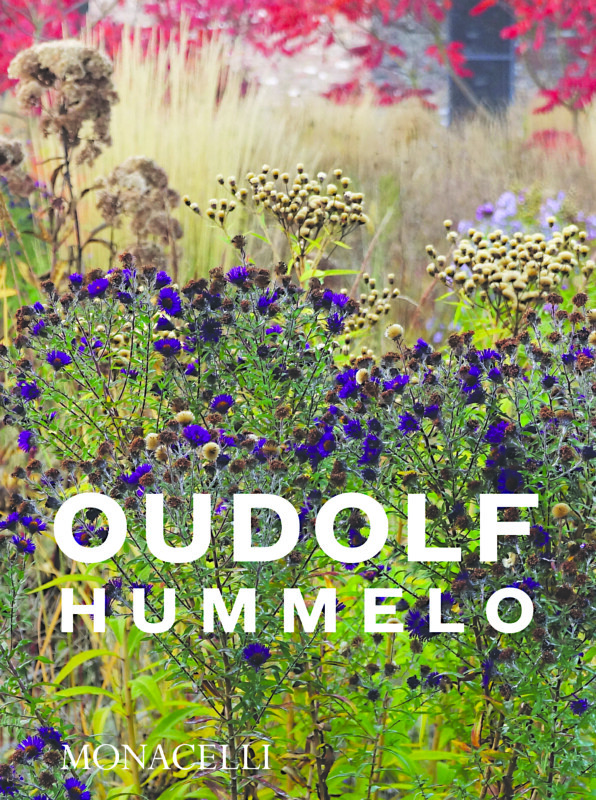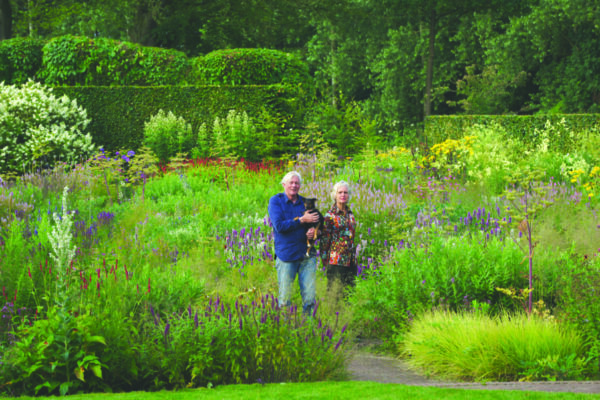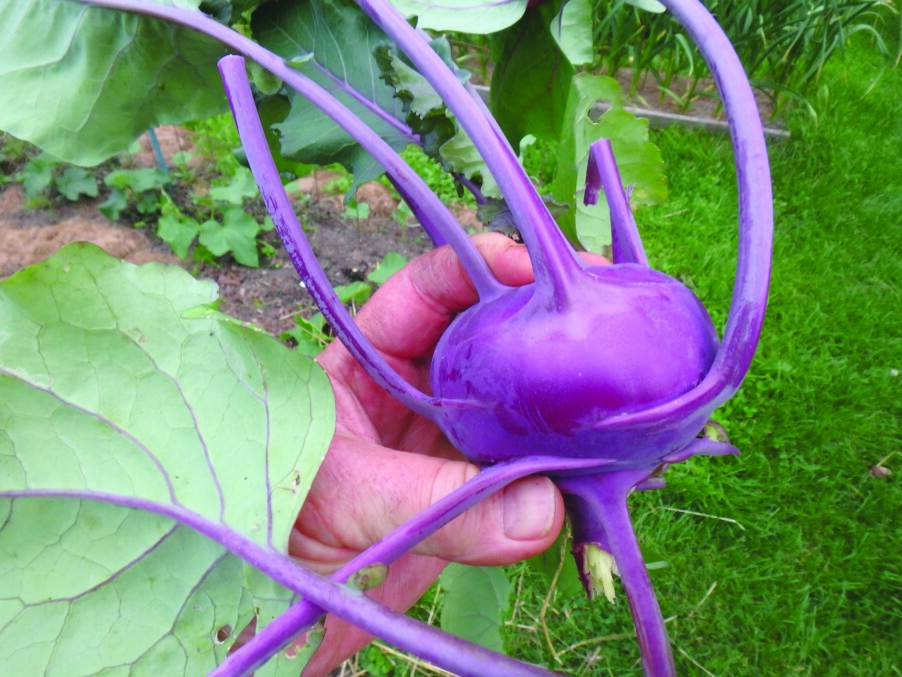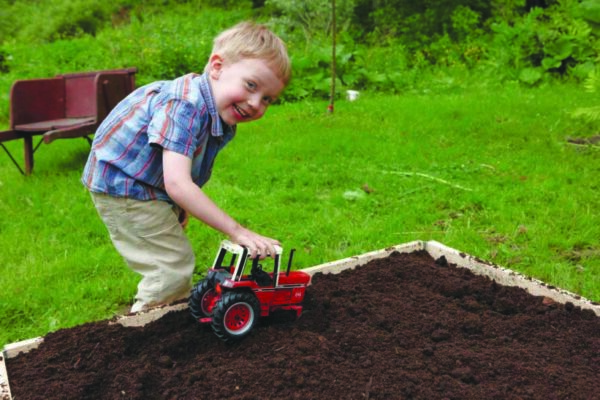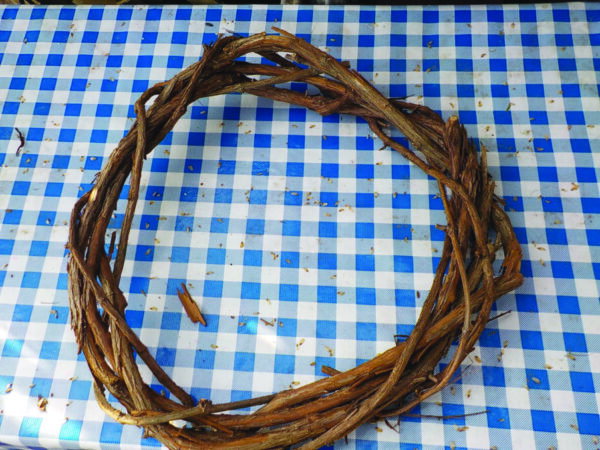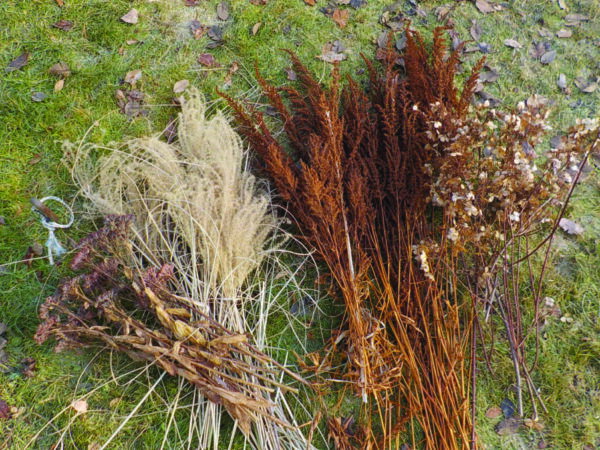And other less drastic ways to deal with Japanese knotweed
I’m a lucky guy: I have no Japanese knotweed. Many is the gardener who has emailed me asking, “What can I do to get rid of Japanese knotweed?” My usual answer? Sell the house.
Japanese knotweed, commonly called bamboo because of its hollow, segmented stems, goes by a number of scientific names, most commonly Polygonum cuspidatum. The leaves are heart-shaped and alternate on the stems, which can reach up to 10 or even 15 feet tall. It was introduced from Japan as a landscape plant in the late 1880’s, and was sometimes planted for erosion control, but quickly proved invasive.
Japanese knotweed spreads easily; its rhizomes (roots) can go 90 feet or more, even popping up through asphalt or pushing through house foundations. I talked to someone who tried to dig out a patch that had been growing for decades by using a backhoe; he quit after digging down 8 feet because he saw roots going even deeper!
Japanese knotweed blooms in early fall with white blossoms that attract bees and other pollinators. The small seeds are carried by wind, water or animals, though research shows that seeds are not usually how it propagates. It spreads by root — even a small bit of root can create a new patch of knotweed, so it is a problem along streams and rivers because flooding can send its invasive roots to new sites miles away. Sometimes highway departments move soil with roots, and it spreads.
Invasive plants (like knotweed) are defined as those coming from a different continent with few or no natural predators here. The bugs that eat purple loosestrife or Japanese knotweed did not come with them when they first made it to our shores. Invasives spread rapidly and can outcompete our native plants for sun, moisture and soil nutrients.
Most invasives can grow in sun or shade in wet or dry soil. They do not need that dark, organic matter-rich soils that we offer our peonies. Invasives, generally, can grow in your gravel driveway if given half a chance.
Most invasives are hard to control for several reasons. Most have extensive root systems that spread far and wide, and are often brittle. Trying to dig out the roots generally results in new plants from scraps of root that broke off, and that is certainly the case for knotweed.
I recently called Pete Butler, an arborist living in Stockbridge, Vermont, to talk about Japanese knotweed. Last summer I visited one of his projects, a public park along the Ottauquechee River in Woodstock, Vermont, to look at his efforts controlling knotweed.
Pete said that the best time to attack a patch of knotweed is in the fall, when the plants are less vigorous and new shoots are less likely to grow after the roots are disturbed. Dig out root masses to get as much root as possible. The roots show bright orange if scraped with your shovel. They are woody and large in a well-established patch. “You’re not going to dig it all out successfully. But taking away a lot of the root mass is like a good punch in the nose,” according to Pete.
He emphasized that you should never get rid of your excavated knotweed roots by taking them away. Destroy them on site by burning them. He takes dead trees, branches from pruning and other wood products to start a hot bonfire that will destroy the knotweed. If you truck it away, it will start growing elsewhere, spreading the problem.
After digging, he said, add some competition. He uses winter rye, planting in the fall. It scavenges nitrogen and starts rebuilding soil that the knotweed has depleted. He also adds fertilizer to improve the soil. In spring the winter rye starts growing early, as does the knotweed. The grass stabilizes the soil and helps re-introduce microbial life, he said.
Getting a soil test will help you determine how badly your soil has been degraded by the knotweed so you can improve it. In the spring he likes to add more grass seeds, particularly sheep fescue and hard fescue. These grasses compete with the little sprouts of knotweed from root scraps that evaded your digging. He does not mow the grasses, which are relatively short.
Pete explained that he uses an IPM or Integrated Pest Management approach to controlling knotweed, including micro-doses of herbicides, just “ounces per acre.” He is licensed to apply pesticides, to help in the process, but cautions that homeowners should not attempt using herbicides. Even herbicides like Roundup, widely touted as safe, can have negative impacts on beneficial plants and soil fungi.
Getting control of a knotweed infestation will take at least three years, Pete said, and each year he uses less herbicide. The “shelf life” of the roots is about nine years, he said, after which they will no longer be viable. Until that time, a site needs to be carefully monitored and appropriate steps taken each year.
When I visited his knotweed control site last summer Pete showed me how competition can help control knotweed. He planted a clump of hemlocks about 6 feet tall, shoulder to shoulder, after removing knotweed roots. They effectively outcompeted the knotweed, even if not completely eliminating the few new shoots that appear each year. He applies micro-doses of herbicide to finish it off.
Knotweed does best in full sun and moist soil, so creating shade near a site will slow it down some. And human activity can discourage it, too. High foot traffic will slow it down.
So maybe you don’t have to sell your house just because you have knotweed. But be prepared to battle it for years. And for those of us committed to organics, we may have to live with a little knotweed.
Featured photo: Japanese knotweed is an attractive plant, but nearly impossible to get rid of. Courtesy photo.

